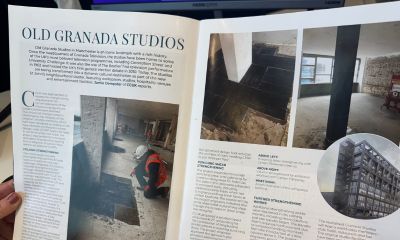An introductory guide to design rights for buildings and structures, including definitions, what the law covers, and how building regulations affect design work
Much like pieces of art and professional photography, buildings are intellectual property and are designed (by architects, engineers, and builders!). Therefore, it makes sense that new builds and regenerated buildings containing new designs come with a set of special copyright laws. Not only do buildings need copyright regulations to protect the design work itself and to prevent it from being duplicated – but design rights for buildings largely have to do with following safety protocols and ensuring the structure is fit for purpose. In this introductory guide to design rights for buildings, structures, and infrastructure, we detail what the law covers, how building regulations affect design work, and more. Need more information? Call us on [enter tel] and our expert team will be happy to assist with your questions!
What are building design regulations, or design rights for buildings?
Interestingly, the first set of building regulations, or `national building standards` as they were once known – were introduced in 1965. The latest set of building design regulations in the UK was updated in 2010, and covers [1]:
- What qualifies as building work (erections, extensions, alterations, insulations, etc.);
- Types of buildings exempt from building regulations (cathedrals, chapels, churches, cottages and farmhouses, period buildings, etc.);
- Obligatory notification procedures to follow before, during, and after building work is carried out;
- Any obligatory requirements surrounding the design and construction of buildings.
UK building regulations protect the vast majority of new buildings along with the regeneration and alteration of existing buildings (except for those exempt, see the list here: Types of building – Designing Buildings).
There are currently 16 vital `parts` to the building regulations we follow in the UK, including (in order of how they appear):
- Structure
- Fire safety
- Site preparations
- Toxic substances
- Sound insulation
- Ventilation
- Sanitation
- Drainage
- Storage of heat appliances (boilers etc.)
- Protection from falling & impact
- Power conservation
- Building access & use
- Overheating
- Electrical safety
- Security
- Installation of infrastructure for broadband, etc.
If you are planning a construction project and would like to know how we work per any of the above parts, please call our specialist team on 01482 425250. We look forward to hearing from you!
Design rights law: the definition of design rights
Design rights in the UK protect any designs completed in the UK, and projects can be registered for copyright protection in the UK and countries belonging to the EU (bearing in mind that the latest version of this law was updated in 2010, before the UK before the EU). According to the legal definition, design rights for buildings protect the project in part or full – including the shape, colours, textures, and materials of the design, along with its ornamentation (how the design appears or is enhanced) [2].
Examples of design rights
Design rights cover all or part of a building’s design (or redesign), and these details are decided while the contract is being drawn up. So, for example – design rights could cover a pattern on a staircase, the staircase as a whole, or the entire space surrounding the staircase. Generally, other construction workers, engineers, and architects can replicate parts of a design if they are used in collaboration with an original design of their own, but they cannot copy the entire design while it is covered under design rights law. Otherwise, this would be an infringement of copyright.
As we previously mentioned, design rights are not strictly about protecting the actual design, but they are about safety, too. So, for example, a staircase’s design rights would ensure the structural elements are safe, sturdy, fit for purpose, compliant with fire safety and falling/impact guidelines, and so on.
What do design rights protect?
Along with protecting the aesthetical design and the design’s safety, they protect workers! Design rights or buildingsprotect lots of people – in fact, everybody named in a project contract! This could include contractors, sub-contractors, engineers, architects, electricians, plumbers – you name it – along with the owner of the building, structure, or infrastructure whereby the works are taking place. During the drawing up of the contract containing the design rights, it is decided who will be culpable for which part of the design. This means that discrepancies over liability will not be experienced further down the line in the unlikely occurrence that the design (or part of it) fails.
How do building regulations affect design?
These regulations exist to ensure the utmost safety of new and regenerated buildings and structures, their contents, and the people utilising them. There may be instances where a specific element of design is desired but it is unsafe to implement, or it goes against the strict guidance of building regulations. This means that, after conducting a feasibility study and analysis, designs might need to be altered or scrapped entirely. For example, if you wanted to install wooden beams next to the entrance of a busy commercial kitchen, we would view this as a flammability risk and would recommend an alternative to this part of the design.
Book your FREE feasibility study with CCUK, discuss design rights today
Are you responsible for a new construction project, or a regeneration of an existing building? Get in touch with our expert team today to book your FREE feasibility study and cost analysis. We’ll visit you on-site to conduct an in-depth study of what you’re looking for, and you’ll also get an approximate quote for your project. There’s no obligation to go ahead, it’s simply an opportunity for you to determine the possibility of your project aligned with your vision!
Suggested reading for you based on `design rights for buildings`
Protecting Buildings From Fire
Browse our successful projects – link to Projects section
References:
[1] Building regulations – Designing Buildings [2] A basic guide to design rights (wrighthassall.co.uk)




